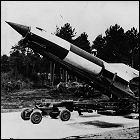 After Germany’s surrender, ending the European hostilities in World War II, American military forces embark on a program to recruit captured German scientists, particularly those involved in the development of rockets and missiles, to perform further research and development in these areas for the United States, especially with the Pacific war between the United States and Japan still very much an active concern. The German scientists are also interrogated to find out if any of their technology has been shared with Japan. Numerous German rocket scientists, notably Wernher von Braun and Eberhard Rees, are identified as possible assets to the American war effort despite their past affiliations with Germany’s Nazi regime.
After Germany’s surrender, ending the European hostilities in World War II, American military forces embark on a program to recruit captured German scientists, particularly those involved in the development of rockets and missiles, to perform further research and development in these areas for the United States, especially with the Pacific war between the United States and Japan still very much an active concern. The German scientists are also interrogated to find out if any of their technology has been shared with Japan. Numerous German rocket scientists, notably Wernher von Braun and Eberhard Rees, are identified as possible assets to the American war effort despite their past affiliations with Germany’s Nazi regime.

 President Truman, after months of weighing the pros and cons of offering amnesty to many of the German scientists involved in the V2 rocket program, signs off on Operation Paperclip, a project to repatriate those scientists to the United States. The initial estimate is that a thousand German scientists will be brought to the U.S., but over time the total will grow closer to 2,000, bringing well over 3,000 family members with them. Wernher von Braun and Hermann Oberth are among the scientists and engineers who accept the offer to work for the U.S., and their efforts, while they do have military value, will form the core of the nascent U.S. space program, with von Braun eventually designing the Saturn V rocket that will take future astronauts to the moon. The Soviet Union mounts a similar program in the weeks to come, attempting to repatriate German scientists and engineers to continue their rocketry research for the Soviets.
President Truman, after months of weighing the pros and cons of offering amnesty to many of the German scientists involved in the V2 rocket program, signs off on Operation Paperclip, a project to repatriate those scientists to the United States. The initial estimate is that a thousand German scientists will be brought to the U.S., but over time the total will grow closer to 2,000, bringing well over 3,000 family members with them. Wernher von Braun and Hermann Oberth are among the scientists and engineers who accept the offer to work for the U.S., and their efforts, while they do have military value, will form the core of the nascent U.S. space program, with von Braun eventually designing the Saturn V rocket that will take future astronauts to the moon. The Soviet Union mounts a similar program in the weeks to come, attempting to repatriate German scientists and engineers to continue their rocketry research for the Soviets. 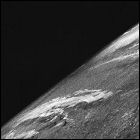 Mounting a 35mm film camera into a captured German V2 rocket launched to an altitude of 65 miles, scientists and engineers at the U.S. Navy’s White Sands Missile Range capture the first photo of Earth from space. (The previous highest-altitude photos taken were from a hot-air balloon in 1935, from an altitude of less than 14 miles, although at that altitude the photos did reveal the curvature of the Earth.) The rocket and camera are destroyed when they fall back to Earth, but the reinforced film cartridge survives. This is the first of many such experimental flights carried out at White Sands.
Mounting a 35mm film camera into a captured German V2 rocket launched to an altitude of 65 miles, scientists and engineers at the U.S. Navy’s White Sands Missile Range capture the first photo of Earth from space. (The previous highest-altitude photos taken were from a hot-air balloon in 1935, from an altitude of less than 14 miles, although at that altitude the photos did reveal the curvature of the Earth.) The rocket and camera are destroyed when they fall back to Earth, but the reinforced film cartridge survives. This is the first of many such experimental flights carried out at White Sands. Continuing experimental photography from captured German V2 rockets, scientists and engineers at the U.S. Army’s White Sands Missile Range capture a view of Earth from space at an altitude of 100 miles. Though the V2 is capable only of ballistic suborbital flight, an automated camera on the rocket captures the curve of the Earth before falling back to the surface. As with earlier experimental unmanned flights in 1946, also using captured V2 rockets, the rocket and camera are destroyed upon impact with the ground.
Continuing experimental photography from captured German V2 rockets, scientists and engineers at the U.S. Army’s White Sands Missile Range capture a view of Earth from space at an altitude of 100 miles. Though the V2 is capable only of ballistic suborbital flight, an automated camera on the rocket captures the curve of the Earth before falling back to the surface. As with earlier experimental unmanned flights in 1946, also using captured V2 rockets, the rocket and camera are destroyed upon impact with the ground.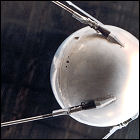 The Soviet Union launches the world’s first artificial satellite, the short-lived Sputnik, which transmits a steady signal from orbit that can be tracked by radio. The reaction in the United States is one of alarmed paranoia, since the launch of an orbiting vehicle demonstrates technological capabilities in excess of what is needed to launch missles from the USSR toward American soil. Sputnik’s launch is the Soviet Union’s contribution to the International Geophysical Year, an international scientific event during which the United States has also promised to launch a satellite.
The Soviet Union launches the world’s first artificial satellite, the short-lived Sputnik, which transmits a steady signal from orbit that can be tracked by radio. The reaction in the United States is one of alarmed paranoia, since the launch of an orbiting vehicle demonstrates technological capabilities in excess of what is needed to launch missles from the USSR toward American soil. Sputnik’s launch is the Soviet Union’s contribution to the International Geophysical Year, an international scientific event during which the United States has also promised to launch a satellite. The Soviet Union launches the Sputnik 2 satellite, this time with the first life form from Earth to reach orbit. A dog named Laika is strapped into the satellite, where she has air and food (though only a limited supply, with no provision for a safe return to Earth), but Laika dies within hours due to overheating from the stress of launch and the unfamiliar sensations of zero gravity, making her the first living thing from Earth to die in space.
The Soviet Union launches the Sputnik 2 satellite, this time with the first life form from Earth to reach orbit. A dog named Laika is strapped into the satellite, where she has air and food (though only a limited supply, with no provision for a safe return to Earth), but Laika dies within hours due to overheating from the stress of launch and the unfamiliar sensations of zero gravity, making her the first living thing from Earth to die in space. The first attempt to launch an American satellite into orbit ends in fire, with the rocket failing to produce enough thrust to take off. The booster falls over and explodes on the launch pad at Cape Canaveral, destroying the Vanguard TV-3 satellite, intended to be America’s contribution to the International Geophysical Year. The blame is later placed on the insistence of not using proven military rockets as launch vehicles.
The first attempt to launch an American satellite into orbit ends in fire, with the rocket failing to produce enough thrust to take off. The booster falls over and explodes on the launch pad at Cape Canaveral, destroying the Vanguard TV-3 satellite, intended to be America’s contribution to the International Geophysical Year. The blame is later placed on the insistence of not using proven military rockets as launch vehicles.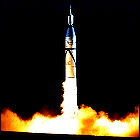 The United States succeeds in launching its own artificial satellite, Explorer 1, atop a Juno 1 rocket. Instruments developed by Dr. James Van Allen reveal the existence of radiation surrounding the Earth, and the areas of radiation are subsequently named the Van Allen radiation belts. The satellite itself is designed by the Jet Propulsion Laboratory and remains in orbit until
The United States succeeds in launching its own artificial satellite, Explorer 1, atop a Juno 1 rocket. Instruments developed by Dr. James Van Allen reveal the existence of radiation surrounding the Earth, and the areas of radiation are subsequently named the Van Allen radiation belts. The satellite itself is designed by the Jet Propulsion Laboratory and remains in orbit until  Also referred to as “Pioneer 0”, the Pioneer space probe is launched by the US Air Force, with the intention of sending it to the moon. Just over a minute after Pioneer’s Thor-Able booster lifts off, the first stage explodes, and Pioneer’s short flight ends in the Atlantic Ocean. The next Pioneer space probe will be handled by the newly formed National Aeronautics and Space Administration later in 1958.
Also referred to as “Pioneer 0”, the Pioneer space probe is launched by the US Air Force, with the intention of sending it to the moon. Just over a minute after Pioneer’s Thor-Able booster lifts off, the first stage explodes, and Pioneer’s short flight ends in the Atlantic Ocean. The next Pioneer space probe will be handled by the newly formed National Aeronautics and Space Administration later in 1958. Less than a year after launching the first Earth-orbiting artificial satellite, the Soviet Union makes its first attempt to launch an unmanned space vehicle toward the moon. The flight of Luna E-1 #1 lasts a mere 92 seconds before its launch vehicle explodes in mid-air. Further attempts will be made by Sergei Korolev’s team of engineers to launch a lunar spacecraft, giving the escalating international space race a new (if somewhat obvious) target for both unmanned and crewed space flights over the next decade.
Less than a year after launching the first Earth-orbiting artificial satellite, the Soviet Union makes its first attempt to launch an unmanned space vehicle toward the moon. The flight of Luna E-1 #1 lasts a mere 92 seconds before its launch vehicle explodes in mid-air. Further attempts will be made by Sergei Korolev’s team of engineers to launch a lunar spacecraft, giving the escalating international space race a new (if somewhat obvious) target for both unmanned and crewed space flights over the next decade. NASA launches the Pioneer 3 space probe, intended – like its predecessors – to visit the vicinity of the moon. Designed to activate a television camera to get the first look at the moon’s far side, Pioneer 3 never reaches its target, only covering a third of the distance between Earth and the moon before it loops back toward Earth and burns up in the atmosphere a day later. Its near-identical twin, Pioneer 4, will be launched in 1959.
NASA launches the Pioneer 3 space probe, intended – like its predecessors – to visit the vicinity of the moon. Designed to activate a television camera to get the first look at the moon’s far side, Pioneer 3 never reaches its target, only covering a third of the distance between Earth and the moon before it loops back toward Earth and burns up in the atmosphere a day later. Its near-identical twin, Pioneer 4, will be launched in 1959.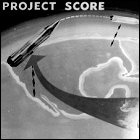 With engineers and ground controllers working under absolute secrecy, the U.S. Advanced Research Projects Agency launches the Atlas rocket-based SCORE satellite, an experimental communications satellite capable of recording four-minute audio messages from the ground for later playback to another part of the world. Though the first communication transmitted to Earth by SCORE is a message from President Eisenhower wishing listeners a peaceful Christmas, there’s little doubt that it’s a thinly-veiled military hardware demonstration. SCORE remains in orbit for only a few weeks before burning up in Earth’s atmosphere.
With engineers and ground controllers working under absolute secrecy, the U.S. Advanced Research Projects Agency launches the Atlas rocket-based SCORE satellite, an experimental communications satellite capable of recording four-minute audio messages from the ground for later playback to another part of the world. Though the first communication transmitted to Earth by SCORE is a message from President Eisenhower wishing listeners a peaceful Christmas, there’s little doubt that it’s a thinly-veiled military hardware demonstration. SCORE remains in orbit for only a few weeks before burning up in Earth’s atmosphere.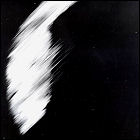 NASA launches the Earth-orbiting satellite Explorer 6 atop a Thor-Able rocket, intended to study various space and upper atmospheric phenomena, as well as to take photos of Earth with an experimental camera system designed to refine engineering concepts for monitoring weather from orbit. Explorer 6 does indeed capture the first (admittedly less than ideal) photo of Earth taken from orbit, from a vantage point of 17,000 miles above Mexico in its elliptical orbit. Explorer 6 will remain in orbit for just under two years.
NASA launches the Earth-orbiting satellite Explorer 6 atop a Thor-Able rocket, intended to study various space and upper atmospheric phenomena, as well as to take photos of Earth with an experimental camera system designed to refine engineering concepts for monitoring weather from orbit. Explorer 6 does indeed capture the first (admittedly less than ideal) photo of Earth taken from orbit, from a vantage point of 17,000 miles above Mexico in its elliptical orbit. Explorer 6 will remain in orbit for just under two years.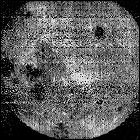 The Soviet Union’s Luna 3 unmanned probe is launched toward the moon, where it transmits the first images of the moon’s far side back to Earth – a sight that has never been seen by humans before since the moon’s near side is tidally locked toward Earth. Luna 3’s closest pass to moon brings it to within 4,000 miles of the lunar surface, and despite low signal strength and data errors during transmission, nearly 20 images of the moon’s far side are sent back to Soviet scientists via a process not unlike sending a fax.
The Soviet Union’s Luna 3 unmanned probe is launched toward the moon, where it transmits the first images of the moon’s far side back to Earth – a sight that has never been seen by humans before since the moon’s near side is tidally locked toward Earth. Luna 3’s closest pass to moon brings it to within 4,000 miles of the lunar surface, and despite low signal strength and data errors during transmission, nearly 20 images of the moon’s far side are sent back to Soviet scientists via a process not unlike sending a fax.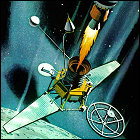 NASA and the Jet Propulsion Laboratory at Caltech begin developing a set of guidelines for what is projected to be a series of five lunar missions, involving vehicles that will photograph the moon from approach to impact, transmitting the images back to Earth live. These guidelines are the beginning of the Ranger program, though technical difficulties will eventually result in nearly twice the number of Ranger unmanned vehicles than originally anticipated.
NASA and the Jet Propulsion Laboratory at Caltech begin developing a set of guidelines for what is projected to be a series of five lunar missions, involving vehicles that will photograph the moon from approach to impact, transmitting the images back to Earth live. These guidelines are the beginning of the Ranger program, though technical difficulties will eventually result in nearly twice the number of Ranger unmanned vehicles than originally anticipated.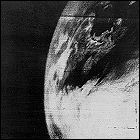 The very first weather satellite, TIROS-1, is launched by the United States. Built under contract by RCA, the nearly-300-pound satellite’s black & white cameras offer the first view of Earth’s cloud systems and weather patterns from orbit. Tiros-1 remains operational for just 78 days, but proves the viability of relying on satellites for weather observation and forceasting.
The very first weather satellite, TIROS-1, is launched by the United States. Built under contract by RCA, the nearly-300-pound satellite’s black & white cameras offer the first view of Earth’s cloud systems and weather patterns from orbit. Tiros-1 remains operational for just 78 days, but proves the viability of relying on satellites for weather observation and forceasting.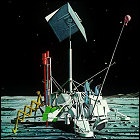 NASA begins soliciting studies from contractors for an unmanned robotic spacecraft to land on the moon. Intended to carry scientific instruments and television cameras to examine the moon from ground-level, the Surveyor landers are intended to reap their own benefit in the form of scientific data, but they will also serve as advanced scouting support missions for possible later manned landings on the moon.
NASA begins soliciting studies from contractors for an unmanned robotic spacecraft to land on the moon. Intended to carry scientific instruments and television cameras to examine the moon from ground-level, the Surveyor landers are intended to reap their own benefit in the form of scientific data, but they will also serve as advanced scouting support missions for possible later manned landings on the moon.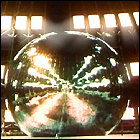 The experimental communications relay satellite Echo 1 is launched into orbit by NASA. A 100-foot metalized Mylar balloon, Echo 1 is a demonstration of passive signal relay, carrying no powered transmitters of its own; its reflective surface simply bounces signals back to Earth. Microwave signals, radio, telephone and TV signals are all successfully relayed via Echo 1; it remains in orbit for four months.
The experimental communications relay satellite Echo 1 is launched into orbit by NASA. A 100-foot metalized Mylar balloon, Echo 1 is a demonstration of passive signal relay, carrying no powered transmitters of its own; its reflective surface simply bounces signals back to Earth. Microwave signals, radio, telephone and TV signals are all successfully relayed via Echo 1; it remains in orbit for four months. The U.S. Air Force launches the first active-relay communications satellite into orbit, Courier 1B (the original Courier 1 having been lost to a faulty launch vehicle earlier). Unlike the reflective Echo 1 satellite, Courier 1B uses power from the solar cells covering its spherical casing to reboost and retransmit the signals it receives from Earth. Once again, a message from President Eisenhower is transmitted, this time to be received by the United Nations. Clourier 1B remains functional for just over two weeks before a glitch renders it useless.
The U.S. Air Force launches the first active-relay communications satellite into orbit, Courier 1B (the original Courier 1 having been lost to a faulty launch vehicle earlier). Unlike the reflective Echo 1 satellite, Courier 1B uses power from the solar cells covering its spherical casing to reboost and retransmit the signals it receives from Earth. Once again, a message from President Eisenhower is transmitted, this time to be received by the United Nations. Clourier 1B remains functional for just over two weeks before a glitch renders it useless. The Soviet Union attempts the first-ever launch of an interplanetary space probe bound for the planet Mars. A failure of its rocket booster prevents it from reaching enough thrust to leave Earth orbit; it eventually falls back to Earth and breaks up while reentering the atmosphere. As with many early Soviet space missions, it is not given any meaningful designation due to the failure of the mission.
The Soviet Union attempts the first-ever launch of an interplanetary space probe bound for the planet Mars. A failure of its rocket booster prevents it from reaching enough thrust to leave Earth orbit; it eventually falls back to Earth and breaks up while reentering the atmosphere. As with many early Soviet space missions, it is not given any meaningful designation due to the failure of the mission.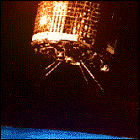 NASA and the United States Weather Bureau launch the second experimental TIROS weather satellite, TIROS-2. Though almost identical to its short-lived predecessor, TIROS-2 is outfitted with a new stabilization system which uses detection of Earth’s magnetic field to properly orient the satellite. TIROS-2 functions successfully for just over one year.
NASA and the United States Weather Bureau launch the second experimental TIROS weather satellite, TIROS-2. Though almost identical to its short-lived predecessor, TIROS-2 is outfitted with a new stabilization system which uses detection of Earth’s magnetic field to properly orient the satellite. TIROS-2 functions successfully for just over one year.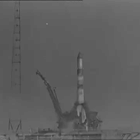 The Soviet Union launches Venera 1, the first interplanetary space probe. Bound for Venus, Venera 1 returns measurements and observations taken during its three-month flight, but loses contact with ground controllers just as it makes its closest approach to Venus at a distance of 62,000 miles from the planet. It falls into an orbit around the sun after falling silent.
The Soviet Union launches Venera 1, the first interplanetary space probe. Bound for Venus, Venera 1 returns measurements and observations taken during its three-month flight, but loses contact with ground controllers just as it makes its closest approach to Venus at a distance of 62,000 miles from the planet. It falls into an orbit around the sun after falling silent.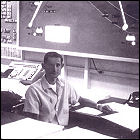 Recent Jet Propulsion Laboratory hire Michael Minovitch submits the first of a series of papers and technical memorandums on the possibility of using carefully-calculated gravitational assist maneuvers to speed transit time between celestial bodies while requiring minimal engine/fuel use. Where most previous scientific thought concentrated on using engine burns (and a lot of fuel) to cancel the effects of a planet’s gravity, Minovitch demonstrated that gravity could be a big help with a carefully calculated trajectory. Though nearly every planetary mission since then has capitalized on Minovitch’s research, it was initially rejected by JPL. Minovitch’s calculations are later revisited by Caltech grad student Gary Flandro, who flags down a particular combination of Minovitch’s pre-computed trajectories for a “grand tour” of the outer solar system, a mission which will eventually be known – in a somewhat scaled-down, less grand form – as Voyager.
Recent Jet Propulsion Laboratory hire Michael Minovitch submits the first of a series of papers and technical memorandums on the possibility of using carefully-calculated gravitational assist maneuvers to speed transit time between celestial bodies while requiring minimal engine/fuel use. Where most previous scientific thought concentrated on using engine burns (and a lot of fuel) to cancel the effects of a planet’s gravity, Minovitch demonstrated that gravity could be a big help with a carefully calculated trajectory. Though nearly every planetary mission since then has capitalized on Minovitch’s research, it was initially rejected by JPL. Minovitch’s calculations are later revisited by Caltech grad student Gary Flandro, who flags down a particular combination of Minovitch’s pre-computed trajectories for a “grand tour” of the outer solar system, a mission which will eventually be known – in a somewhat scaled-down, less grand form – as Voyager.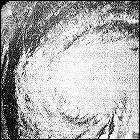 NASA and the United States Weather Bureau launch the third experimental TIROS weather satellite, TIROS-3. Further refinements to the basic TIROS satellite system are made, but one of the satellite’s two television cameras fails within days of going into service. TIROS-3 proves the future life-saving potential of weather satellites by giving Earthbound meteorologists advance warning of the formation and strengthening of Hurricane Esther well before it makes landfall on the east coast of the United States. TIROS-3 is operational for less than a year.
NASA and the United States Weather Bureau launch the third experimental TIROS weather satellite, TIROS-3. Further refinements to the basic TIROS satellite system are made, but one of the satellite’s two television cameras fails within days of going into service. TIROS-3 proves the future life-saving potential of weather satellites by giving Earthbound meteorologists advance warning of the formation and strengthening of Hurricane Esther well before it makes landfall on the east coast of the United States. TIROS-3 is operational for less than a year.